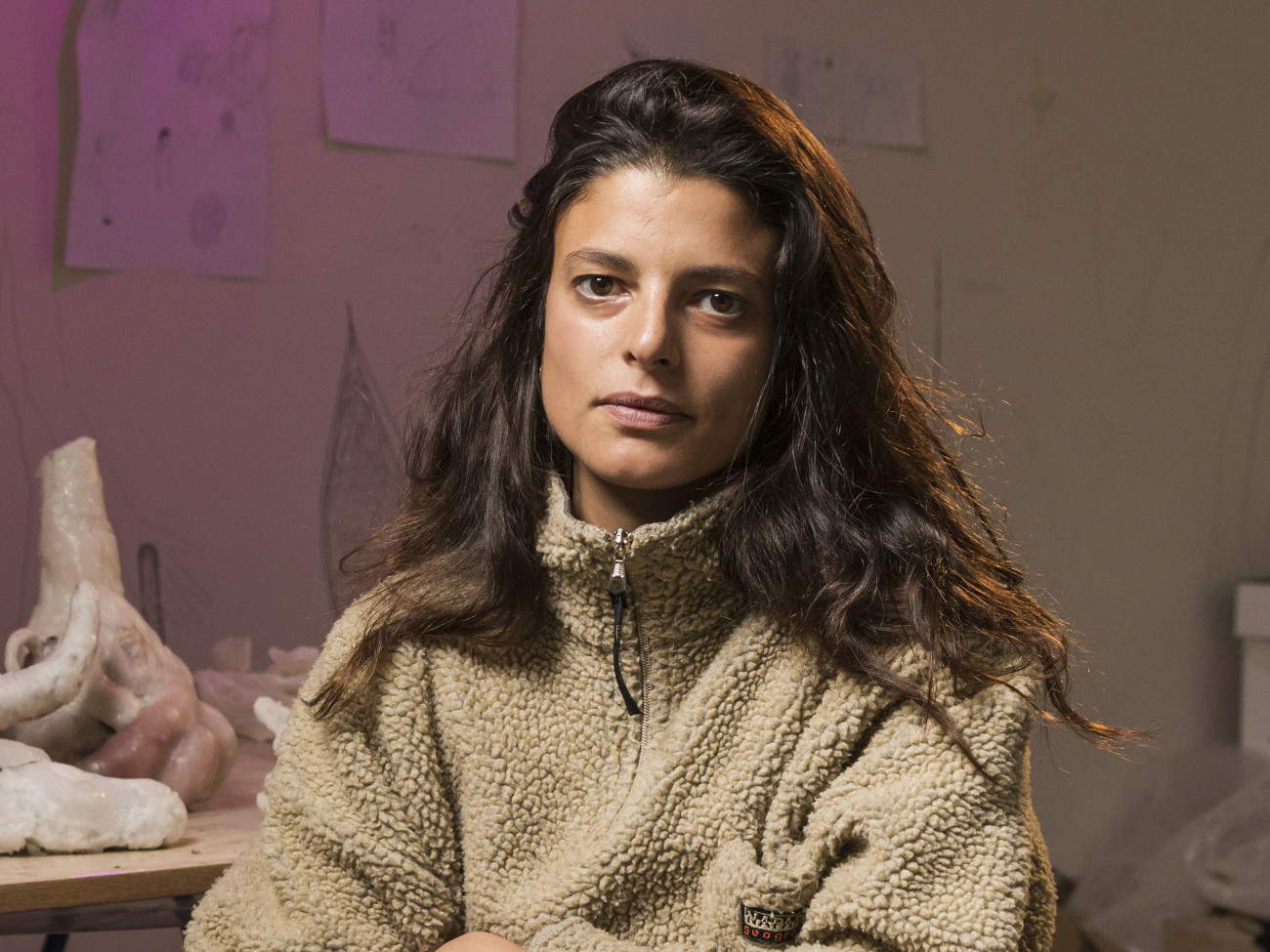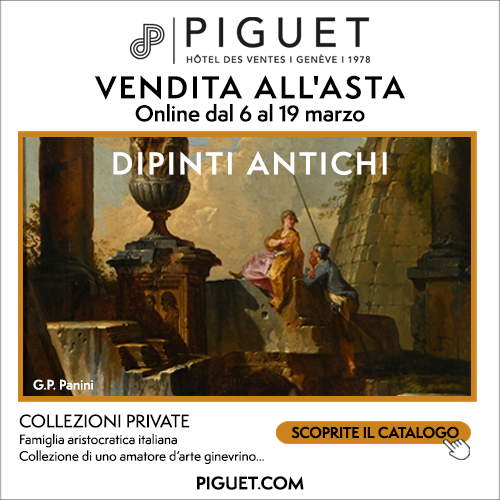Radis, Fondazione CRT's four-year project to enrich the Piedmont region with public art, is born
Radis, the new four-year public art project promoted and conceived by the Fondazione per l’Arte Moderna e Contemporanea CRT, with the collaboration of Fondazione CRC, is kicking off; it aims to bring the collections of two major foundations into dialogue with the territory by transforming the idea of widespread heritage into concrete actions. From the Piedmontese radis (root), the Radis project has a twofold objective: to enrich the Piedmontese territory with a heritage of public art works made available to the community and to make this heritage dialogue with educational initiatives, public programs and collective exhibitions to return part of the collection of the Fondazione per l’Arte Moderna e Contemporanea CRT to the community. A format that will start in the Stura Valley and will be replicated in other areas of the Piedmont region, in collaboration with the main banking foundations.
The first edition of the project was entrusted to curator Marta Papini, who invited artist Giulia Cenci to intervene in a wooded area in the Stura Valley, between the municipality of Rittana and Borgata Paraloup, in the province of Cuneo: the Chiot Rosa area. A clearing dotted with birch trees at 1,200 meters above sea level, a place rich in history and of high symbolic value, as it housed, nearby, the first headquarters in the Cuneo area of the partisan bands of Justice and Freedom. On July 12, a group exhibition will open in Rittana itself, hosting works by the CRT Foundation for Modern and Contemporary Art and the CRC Foundation. Curated by Marta Papini and Leonardo Pietropaolo with Giulia Cenci, the exhibition is part of the run-up to the presentation of the new work, scheduled for October 5, 2024.
“With the Radis project, a new chapter opens for Fondazione per l’Arte Moderna e Contemporanea CRT, and we are pleased that our initiative has convinced other foundations to participate, starting with Fondazione CRC,” says Fondazione CRT President Fabrizio Palenzona. “Radis not only transforms the Piedmont region into a laboratory of artistic production, but also takes the Foundation’s precious heritage outside institutional walls to share it and make it belong to everyone and for everyone.”
“Radis unites art, community and landscape in an intense relationship based on the encounter between the artist and the stories of a place and the people who inhabit it,” says Patrizia Sandretto Re Rebaudengo, president of the Fondazione per l’Arte Moderna e Contempranea CRT. “Radis has the sound of an ancient language: it recalls the experience of rootedness and, at the same time, the idea of growth, a growth that we intend to share in public space, around the works and imaginaries of contemporary art. The project begins in the Stura Valley, in the province of Cuneo, and over the next four years will make its way to the other provinces of Piedmont, drawing a new itinerary under the banner of art, history and contemporaneity, the environment and slow and sustainable tourism.”
Over the four-year period 2024-2027, the project will produce public artworks through a path of active involvement of residents, local authorities and associations.
"Collaborating with the Fondazione per l’Arte Moderna e Contemporanea CRT on the birth and development of the Radis project represents for Fondazione CRC a confirmation of the important path realized on public and contemporary art in recent years. The A Cielo Aperto project, promoted in 2022 to celebrate our 30th anniversary, and the Bando Distruzione represent initiatives that have strongly characterized our work and left important legacies on the territory," comments Ezio Raviola, president of Fondazione CRC. “With the Radis project, which starts precisely from Rittana, a small mountain community in our province that is very active in the arts, we want to reaffirm the centrality of art and culture as a lever for enhancing territories, especially the most peripheral ones, and activating communities, with important spin-offs also in terms of professional growth opportunities for the younger generations.”
“We are extremely happy that the Fondazione per l’Arte Moderna e Contemporanea CRT has singled out our small town of Rittana to launch the Radis project,” commented Giacomo Doglio, Mayor of Rittana. “This reinforces the path we are taking under the banner of contemporary art as an engine of local growth and development, and confirms how culture should be at home everywhere, even overcoming limits and barriers to peripheral and marginal areas like ours. Therefore, I want to sincerely thank all those who conceived this project and are working hard for its success.”
Giulia Cenci was invited to the first edition of Radis because of her interest in places on the border between nature and anthropization and her research focused on the relationships between human beings, animals and the natural environment. The artist will spend a residency period in Rittana to discover and study the potential of the place and to begin a dialogue with the territory and its inhabitants in order to develop a site-specific project that interweaves the history, traditions and characteristics of the area. In her research, the artist hybridizes the human world with that of nonhuman entities, creating installations with post-apocalyptic atmospheres that blur the boundaries between natural and artificial. For her works, Giulia Cenci adopts recycled materials, such as scraps from the agricultural production system or automobile wreckage, or fragments of animal and human prototypes, which she assembles and fuses into complex sculptures in which manual skill and serial production coexist.
“It is a great pleasure to be part of the Radis project. This is the first permanent public commission for me,” said the artist. “It will be a great commitment to work in an area that encompasses so many cultural, natural and territorial layers. The history of this place is particularly impactful, as it has its roots in the most bellicose moments of our country, but at the same time it shows a great regeneration, evident in the attitude of the local population, as well as by the far-reaching geographic conformation, which makes Chiot Rosa a beautiful resting place.”
The work will be produced during the summer and will be unveiled to the public on Oct. 5, 2024; it will remain the property of the Foundation, on permanent loan to the Municipality of Rittana. The 2024 edition of Radis is just the first chapter of a larger project that will feature a different Piedmontese province each year.
For information: www.radis-crt.it
Pictured is Giulia Cenci. Photo by Giovanni Salvi.
 |
| Radis, Fondazione CRT's four-year project to enrich the Piedmont region with public art, is born |
Warning: the translation into English of the original Italian article was created using automatic tools. We undertake to review all articles, but we do not guarantee the total absence of inaccuracies in the translation due to the program. You can find the original by clicking on the ITA button. If you find any mistake,please contact us.





























